Suede is a soft and stylish material used to make shoes, bags, couches, or other items. The problem is suedes easily attract mold when poorly stored. And the unique, delicate nature of the material means you just can’t use water and ordinary detergent to clean it.
You need unique tricks and tactics to avoid spoiling it. So, what to do if you find your suede moldy? That is what we are discussing in this article. Read on to learn expert tips for cleaning moldy suede items and how to keep off mold in the future.
The easiest method to remove mold is to use dish soap. To make dish soap suede cleaner:
- Make a solution of 1 teaspoon dish soap in one cup of warm water in a bowl.
- Dip a clean piece of cloth, and wipe the item until the mold is cleared.
- Thoroughly dry the item before using or storing it.
How to Clean Mold From Suede
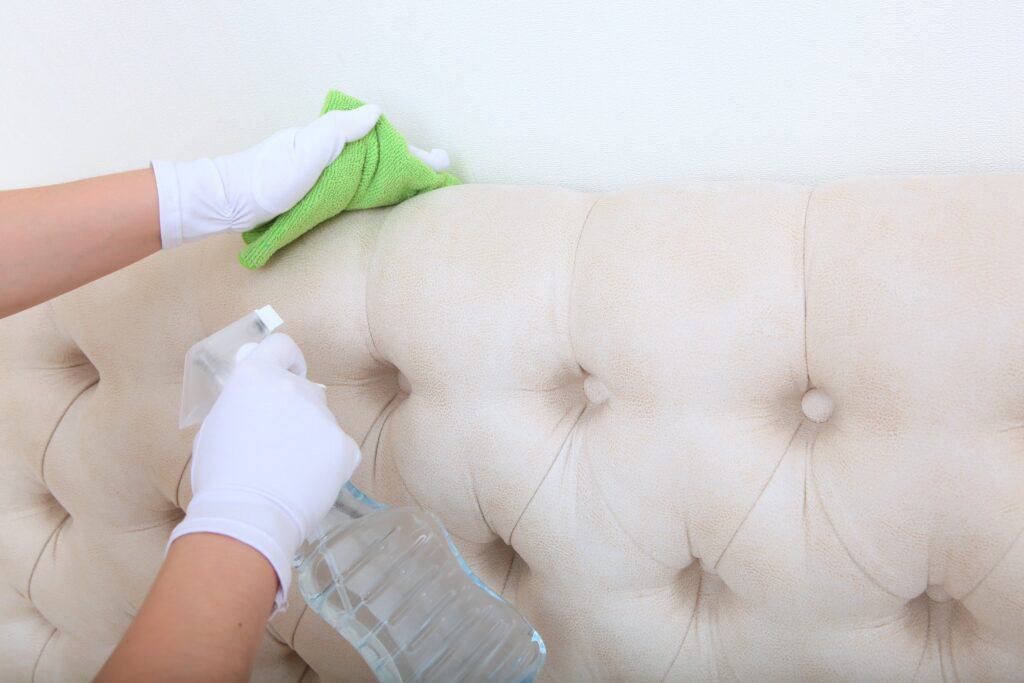
While the method we’ve highlighted above is a quick one, it is by no means the only one. Below are more equally popular methods of cleaning and restoring suede.
Preparation
As pointed out above, removing mold from items, whether on bags or shoes, is a delicate process. As such, you need to prepare adequately for successful results. For instance, without proper preparation, you can easily spread the mold spores around the house and propagate into other items.
First, ensure sufficient personal protection. Wear masks and gloves to prevent inhalation of mold dust and for skin protection.
Next, set your working space in an open area: in your backyard, veranda, garage, etc. Also, gather all the items in one place and have a flat surface, for example, a tabletop, to work on.
Brush off the mold
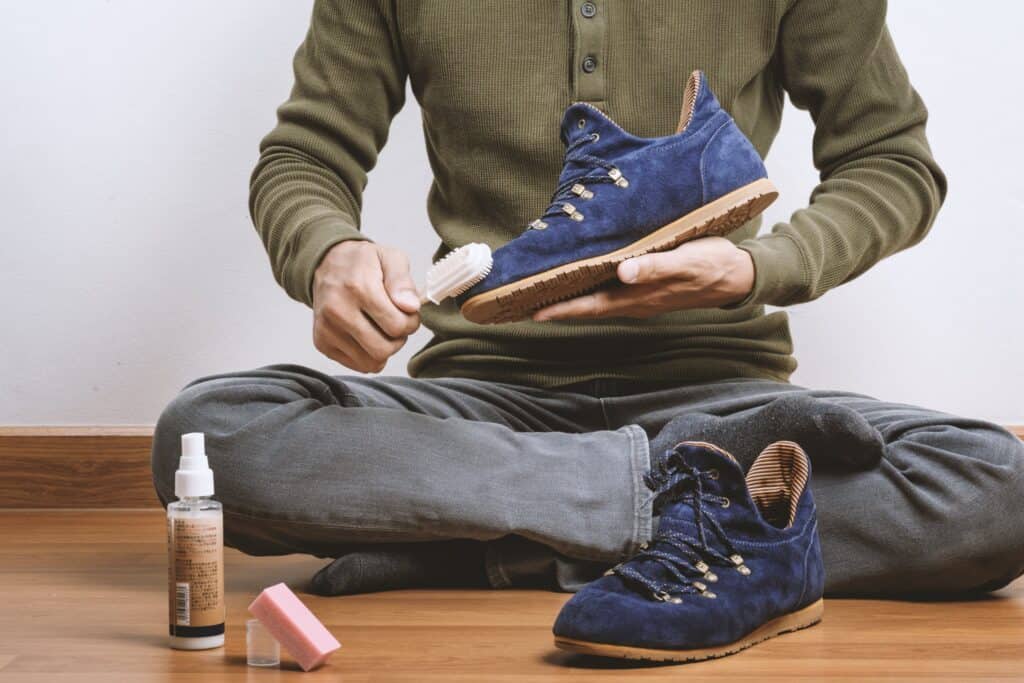
For this, you will need a suede brush. Suede brushes are designed with bristles specifically for scrubbing on the suede leather without plucking off the suede fibers.
Luckily, suede brushes are cheap and are easily obtainable from any convenience or home improvement store.
Work on the mold spots with this brush until you remove most of it from the leather. Remember, only remove the loose part of the mold at this stage; the stubborn part will be dealt with in the next stage.
Apply Petroleum Jelly on the Suede
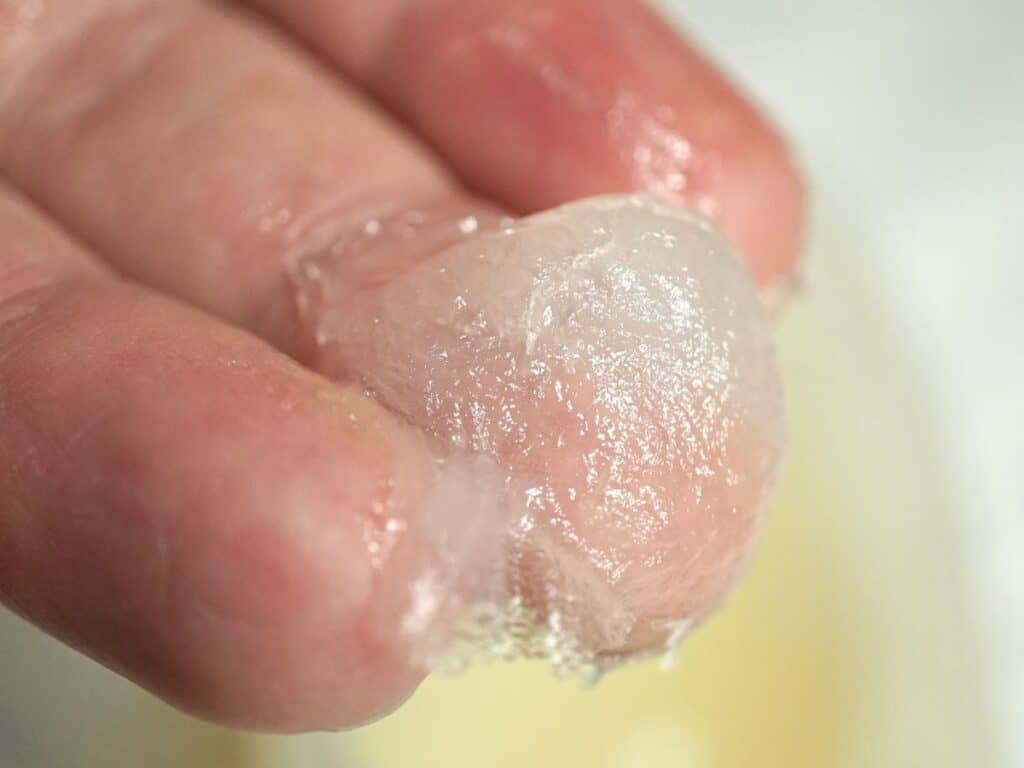
With your finger, scoop and apply a thin layer of vaseline over the mold spot by gently and uniformly rubbing over it. When done, allow the vaseline to sit for approximately 20 minutes for sufficient soaking into the suede leather.
The purpose of vaseline is to cover and kill the mold and also to protect it from the harsh effect of rubbing alcohol used in this process. As a precaution, remember to spot test vaseline on an inconspicuous part of the suede.
The reason is that not all suede leather is compatible with vaseline. Some may break down from vaseline application.
Cleaning Mold Spots With Alcohol
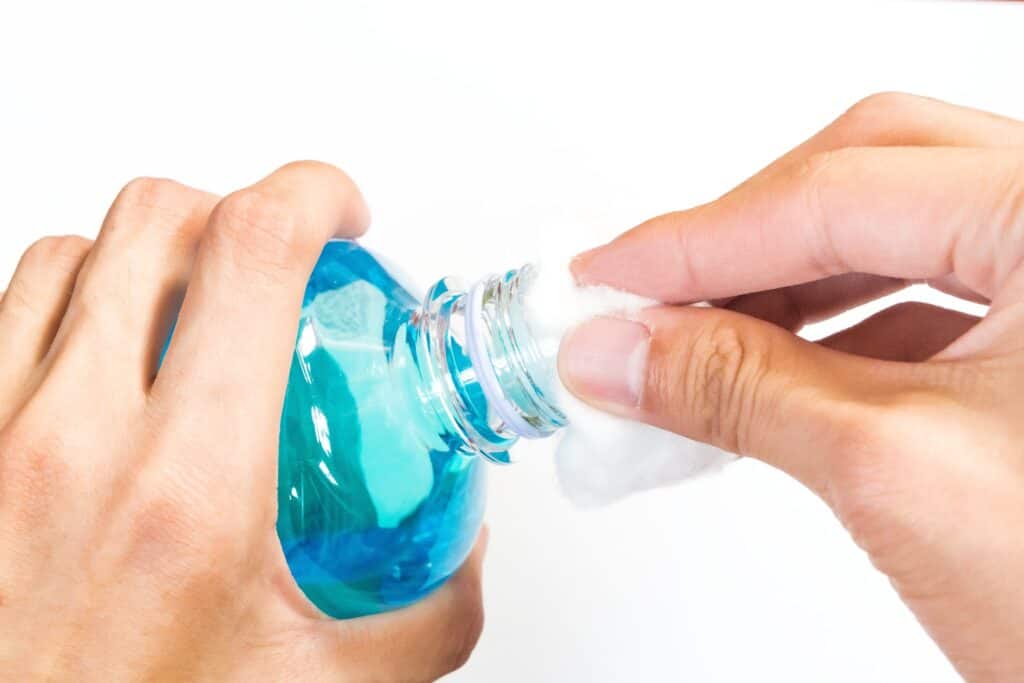
In this stage, we will be applying alcohol to remove mold spots from the suede. To do this, make a solution of ½ a cup of alcohol, and ½ part water. This is sufficient for cleaning ordinary mold patches of small items such as bags or pairs of shoes.
But for larger items, the rule of thumb is 1 part alcohol to 1 part water. Next, dip a piece of cloth or a cotton swab into the solution and rub it over the mold patches. When applying, keep off the rubbing alcohol from the part unprotected by the vaseline. Continue rubbing this way until the stain disappears.
Final Clearance of the Mold
Once you’re done applying the alcohol, allow the item some time for the solution to work on the mold. This should take approximately 10 minutes before using a piece of microfiber cloth to wipe out the mold patches.
Next, give the spot a thorough brushing for a smooth finish before drying it away from the direct sun glare. This is to avoid shock drying, which can make the leather hard and rough. Doing this will completely rid your bag, wallet, shoes, or any suede item of any mold.
To further protect the leather, you should apply a coat of leather conditioner to also give the leather that desirable sheen. Also, during storage, having bags and shoes stuffed with old newspapers is recommended to prevent mold from growing inside them and also to maintain their shape.
Other Methods of Removing Mold From Suede
Using Vinegar
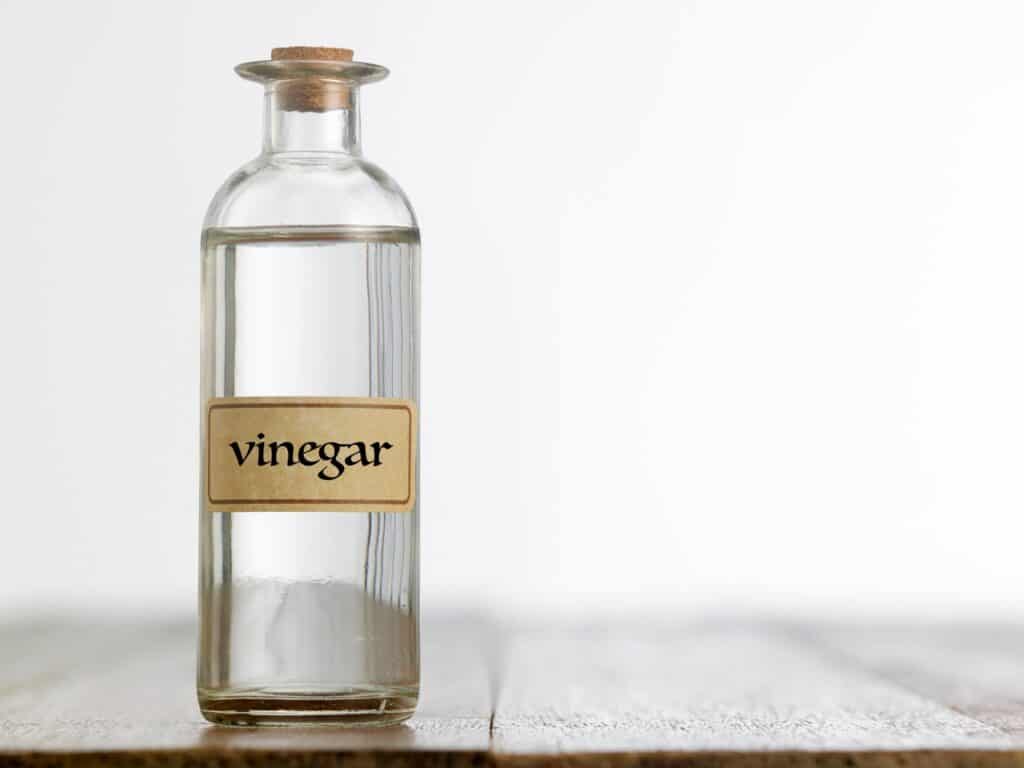
Vinegar is another cleaning agent that is commonly used to remove mold from suede. Vinegar is not only terrific for removing mold stains, but it also stamps out the mold odor. To use vinegar in cleaning your suede, follow the same process as we have done with rubbing alcohol, and the result will be the same.
The only caution is that not all vinegar is compatible with cleaning suede. The recommended one is white vinegar, as other kinds of vinegar may discolor your suede.
Cornstarch
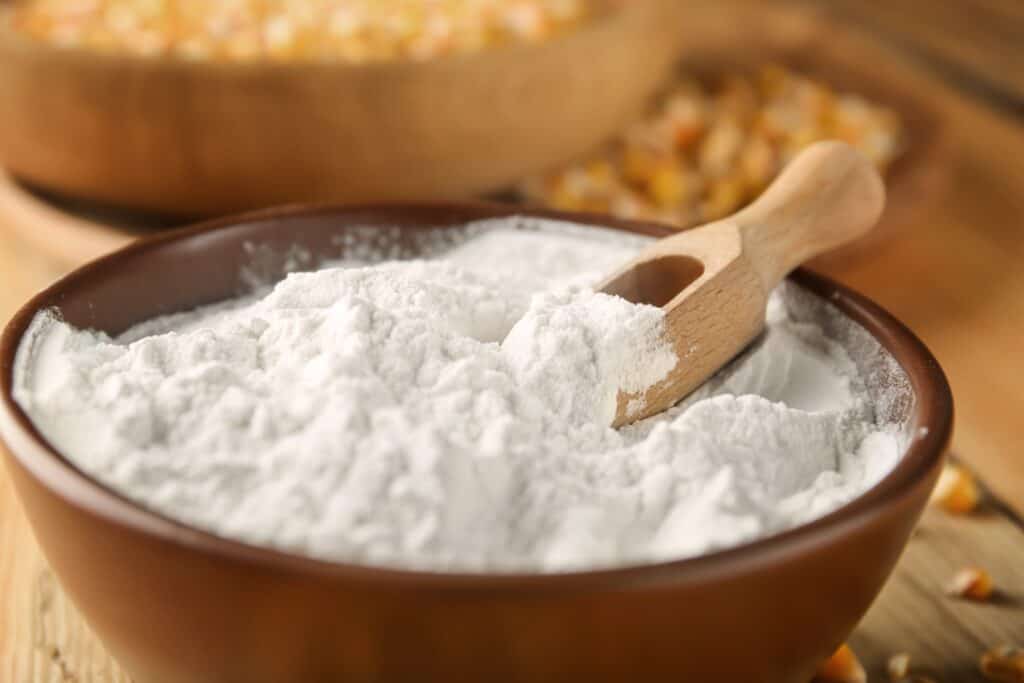
Cornstarch is an effective suede cleaner. The cornstarch cleaning power results from its organic nature, which makes it dissolve and break down mold from the suede. However, cornstarch works best on dry suede.
So you want to make your suede dry before applying scratch. To start, apply a thick layer of cornstarch to the mold stain and wait for an hour. After this period, wipe off the cornstarch from the surface of the suede with a fiber cloth before brushing with a suede brush for a good sheen.
Remove Mold With a Suede Eraser
A suede eraser works wonders when it comes to removing mold suede. In the absence of a suede eraser, a pencil eraser can also be a fine alternative.
Before proceeding, note that this process works best on dry mold stains. If the molds are wet, you can leave them out in the sun for an hour for them to dry out first.
To use the eraser, scrub as you would on a pencil drawing. Be sure to brush more intensely on the more stained patches for better effect. Afterward, brush with a suede brush to restore back the sheen.
Commercial Suede Cleaner
No products found.
If you’re not a fan of the Do-It-Yourself methods we’re describing here, store-bought suede cleaners are also a great option. The great thing is they are specially formulated for suede cleaning. They are gentle on suede yet thorough mold removers.
To use commercial suede cleaners, just apply directly to the mold stains, and allow it to work through the mold stains. Most come with a cotton-tipped wire applicator as part of the package. Then you can dry and brush with a suede brush as usual.
Remove Mold Stains With Talcum Powder
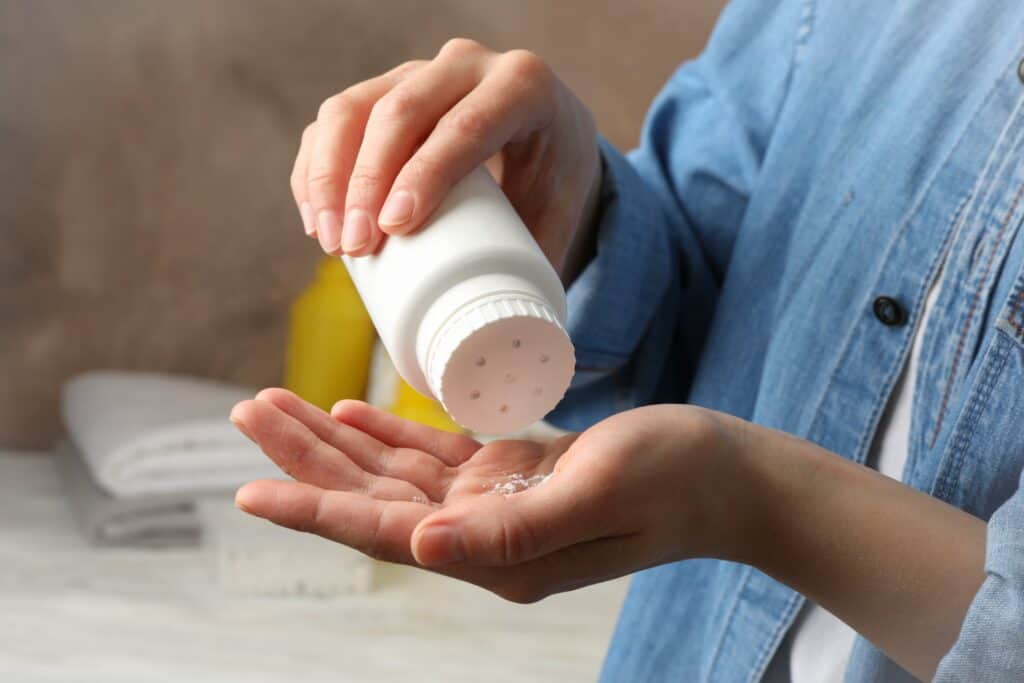
Also known as baby powder, talcum powder is a phenomenal mold on suede stain remover. This is all courtesy of its absorbency characteristics. Talcum powder is one substance you most probably already have in your house. If not, you can easily obtain it from your nearest store or buy it online.
All you have to do is gently apply the mold stain as you would on your skin. Then spread it with your fingers over the mold stain and wait for one hour for effect. Thereafter, using a suede brush, gently clear the powder until it removes the mold and powder as well.
Using Baking Soda to Remove Mold on Suede
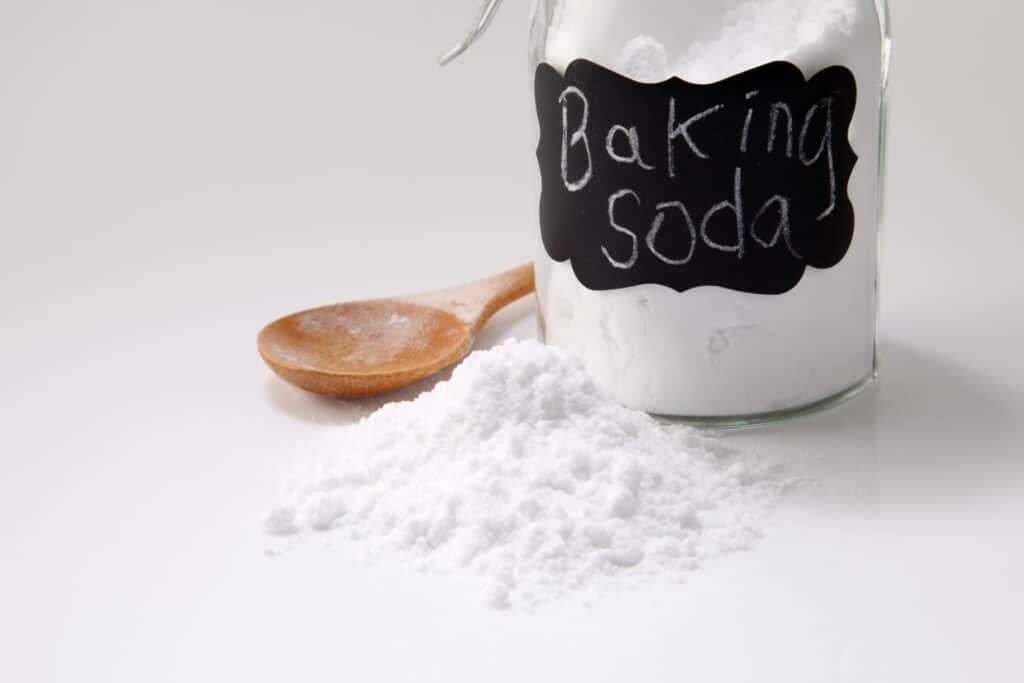
Baking soda is famous for many domestic uses, among them removing mold stains. But other than that, baking is a terrific odor remover as well. So after removing mold stains from suede, the musty mildew odors will be gone too.
To use baking powder, apply a layer to the mold stain and evenly spread it with your fingers. You can then wait for around 20 minutes before brushing as usual.
Cleaning With Hydrogen Peroxide
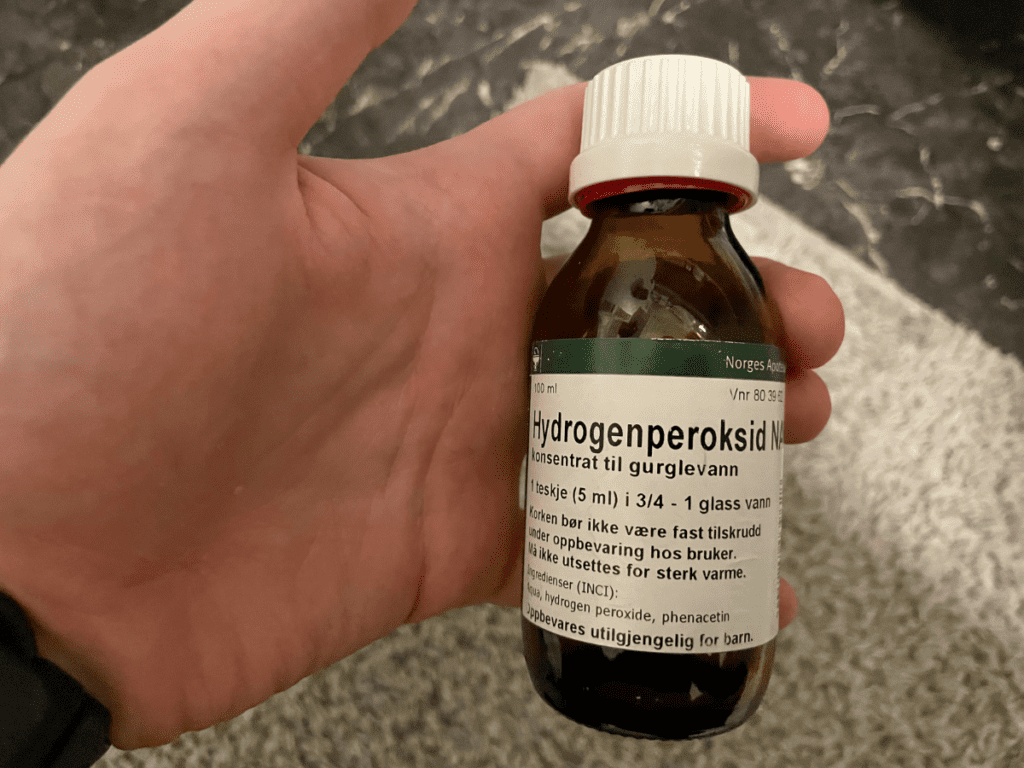
Hydrogen peroxide is another well-known agent with a variety of uses around homes. From clearing stains and brightening to disinfection, hydrogen does it all. Therefore, when it comes to cleaning suedes, it is one of the tried and tested mold removers.
To use it, mix ½ cup of it with 2 cups of water. Then dip a lint-free white piece of cloth and use it to blot the mold stain repeatedly until it is removed.
Afterward, you can use a clean piece of cloth dipped in clean water to rinse the spot. While rinsing, avoid over saturating the spot by first wringing the excess solution off the cloth.
How to Prevent Mold From Suede Shoes
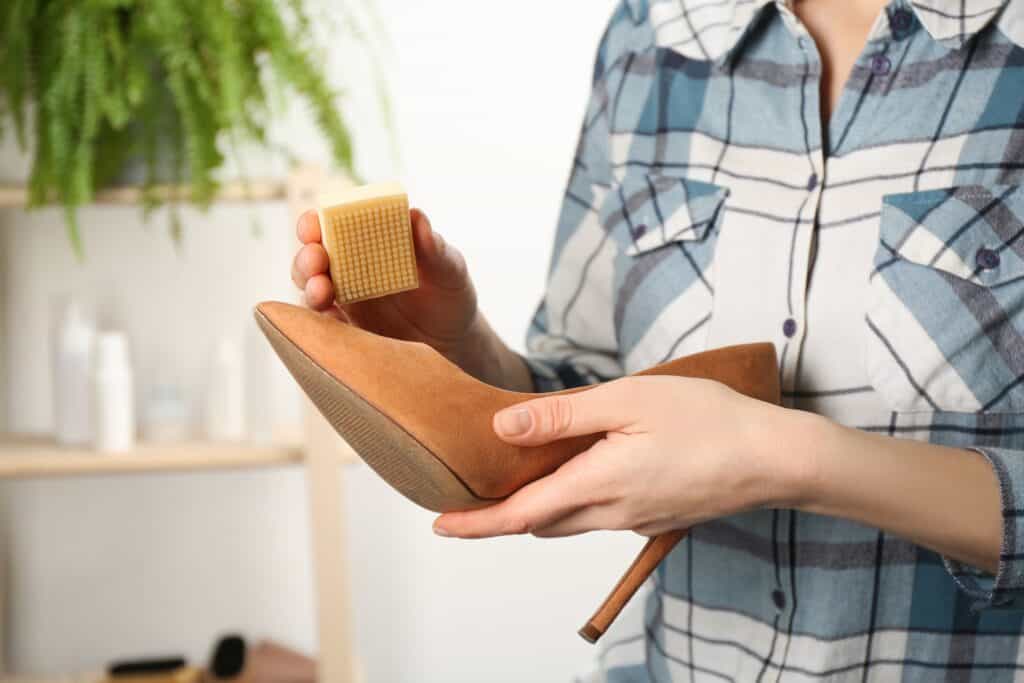
Even as we explore ways of removing mold from suede, the best solution is to keep it off the shoes in the first place. The reason is once your suede has been infected with mold, you may clean it, but that is a starting point for its fast wearing out. Luckily, it is easy to keep off mold from your suede if you use the following tips.
Use Silica Gel Packs During Storage
Silica gel packs are an ingenious way of preserving suede and keeping off the mold. Packed in small sachets, they can easily be obtained in local stores. They absorb moisture around the stored suede, maintaining a cool environment. This effectively keeps off the mold.
Using Dry Tea Bags
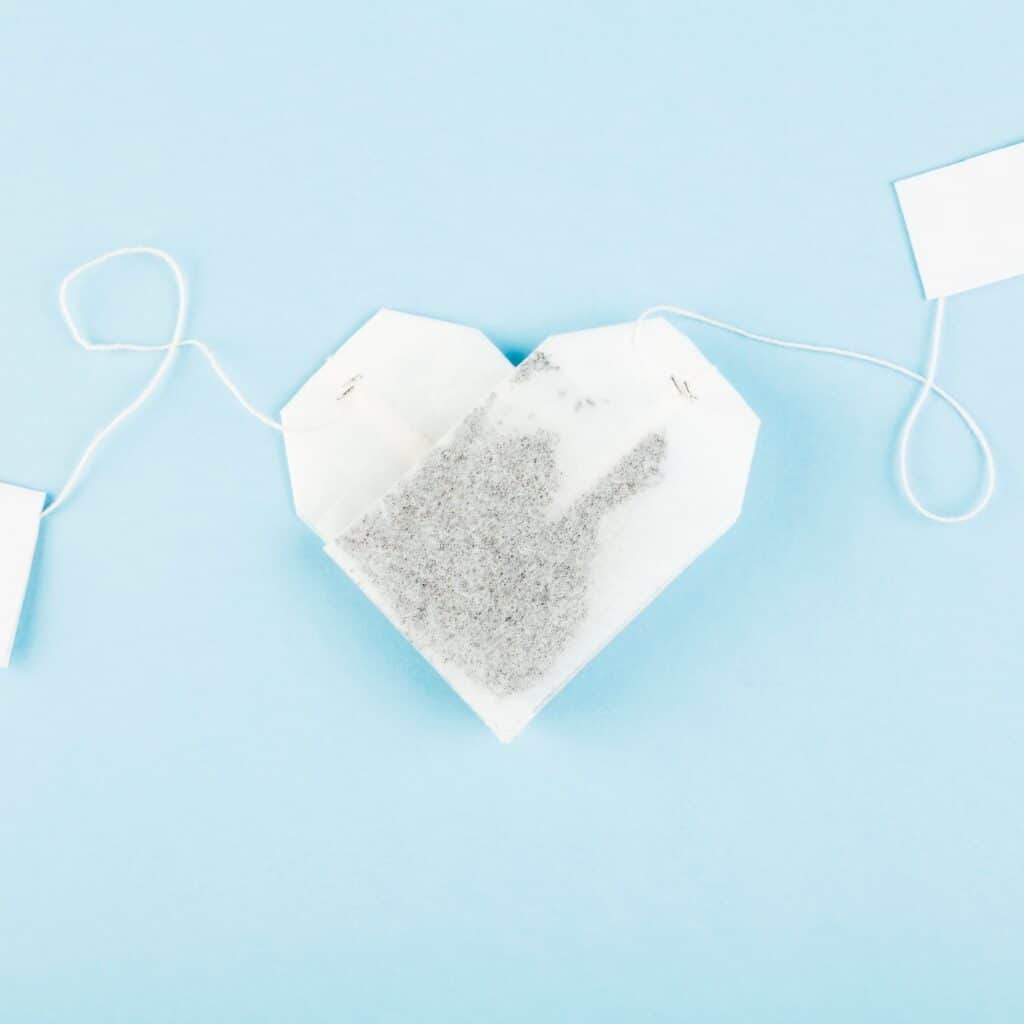
The use of tea has also been praised as an excellent way of keeping mold from suede. They are an excellent alternative to silica gels, as they work the same way. This is by absorbing the moisture within the area the suede is stored.
For example, to store your suede shoes with tea bags, place a few dry tea bags in and around them, and your shoes are safe from mold. But keep in mind to check regularly to replace them. This is because, after some time, they will lose potency or be damaged by pests.
Only Store Dry Suede
Storing wet or moist suede is a guarantee of mold growth, as that is the ideal condition for the development of mold spores. To avoid this, make sure to thoroughly dry and air the items before storing them. Alternatively, use an air dryer or a low setting of the clothes dryer.
Avoid Polythene Bags
Polythene bags are not breathable. Any moisture that is trapped in the bag cannot escape, creating a propagating environment for mold. And that is why storing suede in them should be avoided.
The best thing to do is to place them uncovered in the closet. But if you must use bags, cotton, woven, or brown bags are the better choice. They are breathable and therefore cannot create an environment for the growth of mold.
Use Waterproofing Agents
Applying a suede conditioner is essential if you have to keep your suede in tip-top condition, especially when storing them for long. The conditioner acts as a waterproofing agent to keep off any moisture on the suede surface to avoid the growth of mold.
Frequently Asked Questions
How Often Should I Clean Suede?
For stored items, inspecting for mold and cleaning once every three months is recommended. If the items are in constant use, there is a low chance of growing mold. Therefore, all they need is regular maintenance.
But all this also depends on factors such as how often the item is used, how long it has been stored, and the kind of suede item.
Does Water Ruin Suede?
Water can only ruin suede if the item is not dried properly before storing. Thoroughly drying ensures no chance for the growth of mold.
That aside, water makes suede soft, but once it is properly dried, it is restored to its original quality state. So water can only ruin suede if you allow it to happen.
Can You Use Soap for Cleaning Suede?
The use of soap for cleaning suede is not recommended. This is because suede is not waterproof. And depending on how delicate the suede is, some soaps may react with and weaken the suede.
However, to mitigate this problem, you can apply waterproofing suede protecting sprays. Additionally, to avoid the use of soap, you can use more protective agents such as rubbing alcohol or vinegar.
Next, you can check out my guide on removing discoloration leather causes on clothes or on removing water stains from leather.

I’m an expert wardrobe organizer and a bit of a clean freak. I created this website and its YouTube channel to share practical guides about laundry and organizing. My teachings have been featured in multiple large news publications, and I’ve self-published two wardrobe organizing books and an entire course on the subject.


